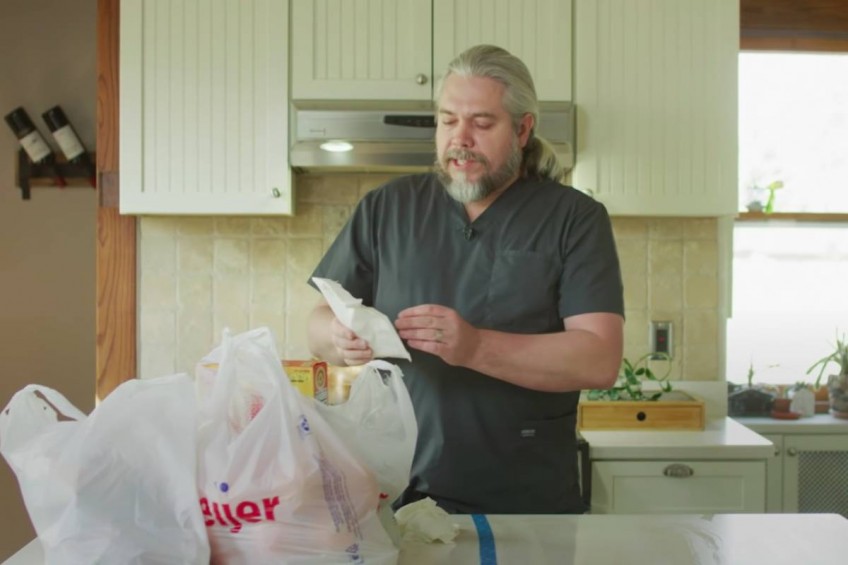Covid-19: Doctor shares 'sterile technique' to reduce risk from grocery shopping and take-out


Covid-19 has now affected the whole world. Nationwide lockdowns, school and enrichment centre closures, social distancing and now… encouraging the public to sanitise our groceries and take-out food?
To some, this might seem a little too extreme in fighting the Covid-19 pandemic. But not when you are dealing with this respiratory disease that could affect a loved one negatively.
Vulnerable groups such as the elderly, individuals with pre-existing medical conditions and compromised immune systems are at high risk when it comes to the virus.
In Singapore, the confirmed cases count has been increasing rapidly, with 631 confirmed cases and two deaths reported as of 26 March. And the numbers are not letting up despite increased precautionary measures implemented to contain the virus.
It is known that Covid-19 is spread through human-to-human contact, in the form of droplets caused by sneezing or coughing. They could also be spread through the contact with germs left on objects and surfaces - and are able to survive on them for hours, or even days depending on the type of surface.
With more individuals staying at home during this crucial period, even getting out of our homes can be risky to obtain food - while ensuring its safe consumption.
With 20 years of experience under his belt, Dr. Jeffrey VanWingen MD, a family physician based in Michigan has shared a 15-minute video on his Youtube Channel to help the public tackle this issue, teaching them how to shop and handle food safer.
VanWingen shares a technique that is often used by medical professionals to reduce risks during surgeries: sterile technique.
He adapts the technique that can be used in grocery shopping and getting take-outs, in efforts to decrease the risk of contracting coronavirus. Here are his tips:
Supermarkets might be sanitising the racks, but not every canned food, or plastic wrap item. But there are some things within your control:
ALSO READ: Coronavirus: SG Clean certificates dished out to hawker stalls meeting new hygiene standards
Do remember to sanitise your workspace/kitchen table with a standard disinfectant before placing your groceries on them.
In the video, VanWingen divides the table into half, one side with the groceries, and the other side of the table dedicated to the placing of sanitised groceries. Here are further tips:
ALSO READ: Coronavirus outbreak: Why still so dirty, Singapore?
Always wash your hands before touching and removing your take-out food. Here are some key tips:
And when it comes to take-out food, you might also want to avoid eating them in exposed environments, such as in your car.
We can all do our part through these small, but combined efforts in fighting the coronavirus. Meanwhile, do remember to practice personal hygiene such as scrubbing your hands and coughing into your elbows. Stay safe!
You can watch the video here:
[embed]https://youtu.be/sjDuwc9KBps[/embed]
For the latest updates on the coronavirus, visit here.
This article was first published in theAsianparent.